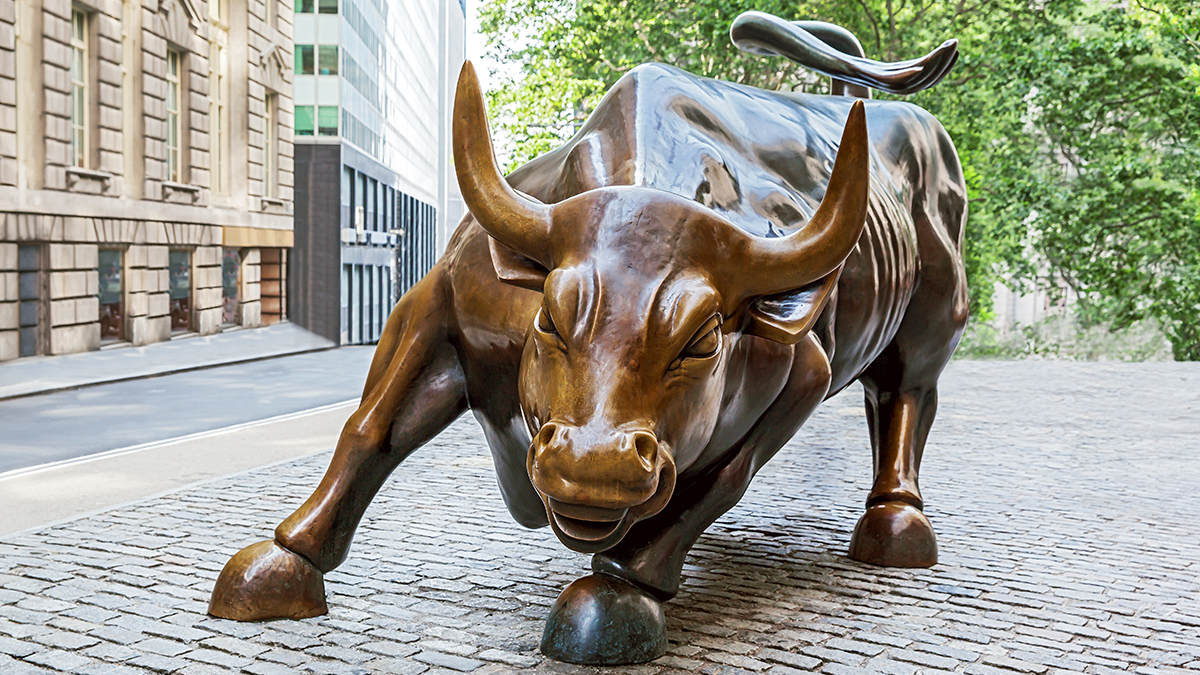
In "What’s the Next Game Changer Ahead," Ziad K. Abdelnour identifies significant shifts in the investment landscape, comparing the current era to past transformative periods. Abdelnour recounts two previous sea changes in the investment world: the rise and fall of the Nifty Fifty stocks and the emergence of high-yield bonds. He argues that we are now experiencing a third sea change driven by changing interest rates and economic conditions.
The Nifty Fifty era taught investors that perceived quality does not guarantee safety or successful investment outcomes. Similarly, the introduction of high-yield bonds in the mid-1970s revolutionized the bond market, allowing investments in lower-rated securities if adequately compensated for risk. This led to the growth of leveraged buyouts and private equity, fundamentally changing investment strategies.
The period from the end of the Global Financial Crisis (GFC) to the onset of the pandemic was characterized by ultra-low interest rates and prolonged economic recovery. However, the post-pandemic era has seen rising inflation and interest rates, marking a stark departure from the previous decade’s trends. These shifts have created a more favorable environment for lenders and bargain hunters.
Abdelnour emphasizes that today’s higher inflation and interest rates will dominate the investment landscape for years to come. The optimism and ease of the post-GFC period are unlikely to return soon, and investors must adapt to these new conditions. Credit instruments now offer solid returns, reducing reliance on riskier investments.
Abdelnour suggests that the strategies successful during the past 40 years may not perform well in the new environment. Investors should expect ongoing adjustments as they navigate this third sea change, focusing on adapting their strategies to the evolving economic landscape.
For more information, visit Financial Policy Council.
In my 3 decades in the investment world, I’ve seen a number of economic cycles, pendulum swings, manias and panics, bubbles and crashes, but I remember only two real sea changes. I think we may be in the midst of a third one today.
It all started with the so-called “Nifty Fifty.” The Nifty Fifty comprised the stocks of companies that were considered the best and fastest-growing – so good that nothing bad could ever happen to them. For these stocks, everyone was sure there was “no price too high.” until you were sitting on losses of more than 90% . . . from owning pieces of the best companies in America. Perceived quality, it turned out, wasn’t synonymous with safety or with successful investment.
Meanwhile, over in bond-land, a security with a rating of single-B was described by Moody’s as “failing to possess the characteristics of a desirable investment.” Non-investment grade bonds – those rated double-B and below – were off-limits to fiduciaries, since proper financial behavior mandated the avoidance of risk. For this reason, what soon became known as high yield bonds couldn’t be sold as new issues. But in the mid-1970s, Michael Milken and a few others had the idea that it should be possible to issue non-investment grade bonds – and to invest in them prudently – if the bonds offered enough interest to compensate for the risk of default. In 1984, I started investing in these securities – the bonds of perhaps America’s riskiest public companies – and I was making money steadily and safely.
In other words, whereas prudent bond investing had previously consisted of buying only presumedly safe investment grade bonds, investment managers could now prudently buy bonds of almost any quality as long as they were adequately compensated for the attendant risk. The U.S. high yield bond universe amounted to about $2 billion when I first got involved, and today it stands at roughly $1.2 trillion.
This clearly represented a major change in direction for the business of investing. But that’s not the end of it. Prior to the inception of high yield bond issuance, companies could only be acquired by larger firms – those that were able to pay with cash on hand or borrow large amounts of money and still retain their investment grade ratings. But with the ability to issue high yield bonds, smaller firms could now acquire larger ones by using heavy leverage, since there was no longer a need to possess or maintain an investment grade rating. This change permitted, in particular, the growth of leveraged buyouts and what’s now called the private equity industry.
However, the most important aspect of this change didn’t relate to high yield bonds, or to private equity, but rather to the adoption of a new investor mentality. Now risk wasn’t necessarily avoided, but rather considered relative to return and hopefully borne intelligently. This new risk/return mindset was critical in the development of many new types of investment, such as distressed debt, mortgage backed securities, structured credit, and private lending. It’s no exaggeration to say today’s investment world bears almost no resemblance to that of 50 years ago. Young people joining the industry today would likely be shocked to learn that, back then, investors didn’t think in risk/return terms. Now that’s all we do. Ergo, a sea change.
Now what are the factors that gave rise to investors’ success over the last 40 years? We saw major contributions from (a) the economic growth and preeminence of the U.S.; (b) the incredible performance of our greatest companies; (c) gains in technology, productivity and management techniques; and (d) the benefits of globalization. However, I’d be surprised if 40 years of declining interest rates didn’t play the greatest role of all.
In a recent visit with clients, I came up with a bit of imagery to convey my view of the effect of the prolonged decline in interest rates: At some airports, there’s a moving walkway, and standing on it makes life easier for the weary traveler. But if rather than stand still on it, you walk at your normal pace, you move ahead rapidly. That’s because your rate of travel over the ground is the sum of the speed at which you’re walking plus the speed at which the walkway is moving.
That’s what I think happened to investors over the last 40 years. They enjoyed the growth of the economy and the companies they invested in, as well as the resulting increase in the value of their ownership stakes. But in addition, they were on a moving walkway, carried along by declining interest rates. The results have been great, but I doubt many people fully understand where they came from. It seems to me that a significant portion of all the money investors made over this period resulted from the tailwind generated by the massive drop in interest rates. I consider it nearly impossible to overstate the influence of declining rates over the last four decades.
The Recent Experience
The period between the end of the Global Financial Crisis (GFC) in late 2009 and the onset of the pandemic in early 2020 was marked by ultra-low interest rates, and the macroeconomic environment – and its effects – were highly unusual.
An all-time low in interest rates was reached when the Fed cut the fed funds rate to approximately zero in late 2008 in an effort to pull the economy out of the GFC. The low rates were accompanied by quantitative easing: purchases of bonds undertaken by the Fed to inject liquidity into the economy (and perhaps to keep investors from panicking). The effects were dramatic:
As a result, in this period, the U.S. enjoyed its longest economic recovery in history (albeit also one of its slowest) and its longest bull market, exceeding ten years in both cases.
In fact, the overall period from 2009 through 2021 (with the exception of a few months in 2020) was one in which optimism prevailed among investors and worry was minimal. Low inflation allowed central bankers to maintain generous monetary policies. These were golden times for corporations and asset owners thanks to good economic growth, cheap and easily accessible capital, and freedom from distress. This was an asset owner’s market and a borrower’s market. With the risk-free rate at zero, fear of loss absent, and people eager to make risky investments, it was a frustrating period for lenders and bargain hunters.
That Was Then. This Is Now.
Of course, all of the above flipped in the last year or so. Most importantly, inflation began to rear its head in early 2021, when our emergence from isolation permitted too much money to chase too few goods and services. Because the Fed deemed the inflation “transitory,” it continued its policies of low interest rates and quantitative easing, keeping money loose. These policies further stimulated demand (especially for homes) at a time when it didn’t need stimulating.
Inflation worsened as 2021 wore on, and late in the year, the Fed acknowledged that it wasn’t likely to be short-lived. Thus, the Fed started reducing its purchases of bonds in November and began raising interest rates in March 2022, kicking off one of the quickest rate-hiking cycles on record. The stock market, which had ignored inflation and rising interest rates for most of 2021, began to fall around year-end.
From there, events followed a predictable course that caused pessimism to take over from optimism. The market characterized by easy money and upbeat borrowers and asset owners disappeared; now lenders and buyers held better cards. Credit investors became able to demand higher returns and better creditor protections. The list of candidates for distress – loans and bonds offering yield spreads of more than 1,000 basis points over Treasurys – grew from dozens to hundreds.
My personal outlook
Inflation and interest rates are highly likely to remain the dominant considerations influencing the investment environment for the next several years. While history shows that no one can predict inflation, it seems likely to remain higher than what we became used to after the GFC, at least for a while. The course of interest rates will largely be determined by the Fed’s progress in bringing inflation under control. If rates go much higher in that process, they’re likely to come back down afterward, but no one can predict the timing or the extent of the decrease.
What we do know is that inflation and interest rates are higher today than they’ve been for 40 and 13 years, respectively. Regardless, I think things will generally be less rosy in the years immediately ahead:
The bottom line for me is that, in many ways, conditions at this moment are overwhelmingly different from – and mostly less favorable than – those of the post-GFC climate described above. These changes may be long-lasting, or they may wear off over time. But in my view, we’re unlikely to quickly see the same optimism and ease that marked the post-GFC period.
We’ve gone from the low-return world of 2009-21 to a full-return world, and it may become more so in the near term. Investors can now potentially get solid returns from credit instruments, meaning they no longer have to rely as heavily on riskier investments to achieve their overall return targets. Lenders and bargain hunters face much better prospects in this changed environment than they did in 2009-21. And more importantly, if you grant that the environment is and may continue to be very different from what it was over the last 13 years – and most of the last 40 years – it should follow that the investment strategies that worked best over those periods may not be the ones that outperform in the years ahead.
That’s the third sea change I’m talking about today.
Disclaimer: This article discusses certain companies and their products or services as potential solutions. These mentions are for illustrative purposes only and should not be interpreted as endorsements or investment recommendations. All investment strategies carry inherent risks, and it is imperative that readers conduct their own independent research and seek advice from qualified investment professionals tailored to their specific financial circumstances before making any investment decisions.
The content provided here does not constitute personalized investment advice. Decisions to invest or engage with any securities or financial products mentioned in this article should only be made after consulting with a qualified financial advisor, considering your investment objectives and risk tolerance. The author assumes no responsibility for any financial losses or other consequences resulting directly or indirectly from the use of the content of this article.
As with any financial decision, thorough investigation and caution are advised before making investment decisions.
Disclaimer: This article discusses certain companies and their products or services as potential solutions. These mentions are for illustrative purposes only and should not be interpreted as endorsements or investment recommendations. All investment strategies carry inherent risks, and it is imperative that readers conduct their own independent research and seek advice from qualified investment professionals tailored to their specific financial circumstances before making any investment decisions.
The content provided here does not constitute personalized investment advice. Decisions to invest or engage with any securities or financial products mentioned in this article should only be made after consulting with a qualified financial advisor, considering your investment objectives and risk tolerance. The author assumes no responsibility for any financial losses or other consequences resulting directly or indirectly from the use of the content of this article.
As with any financial decision, thorough investigation and caution are advised before making investment decisions.

CHECKMATE COMMUNISM: The Most Critical Chess Game of Our Lives August 29, 2024

The Trojan Horse of Artificial Intelligence: A Corrupt Bargain, A Nation’s Betrayal August 15, 2024

Power, Conquest, Glory: Unlock the Master Code to Riches August 12, 2024

The Financial Policy Council-Cultivating Liberty, Championing Prosperity, and Shaping America’s Future August 5, 2024

The Great Equalizer- Harnessing the Power of Economic Education to Create a More Equitable and Prosperous Nation June 19, 2024

Virtual Staging AI: Revolutionizing Real Estate Investing in Miami June 18, 2024

The Venture Debt Delusion: A Faustian Bargain for Modern Entrepreneurs May 29, 2024

Unveiling The Secret Weapon in Personal Branding Harnessing Vulnerability to Build Trust May 13, 2024

Biden’s Administration Proposal To Eliminate The 1031 Tax Exchange: Potential Impacts On Real Estate Investors And The Economy May 9, 2024

Terrorism vs. Renewable Energy – A Game Theory Analysis April 29, 2024

Beyond Division: The Financial Policy Council’s Role in Fostering Unity and Dialogue in the Age of Cancel Culture April 22, 2024

Safeguarding your Brand’s future with AI Guardrails April 15, 2024

Technology Innovations to Unlock Abundant Domestic Fossil Fuel Supplies April 10, 2024

The Grand Illusion. Cancer, Elites, and the Eternal Quest for Power. March 26, 2024

Fortunes Forged in the Fires of Finance: Navigating Wall Street’s Tumultuous Waters January 29, 2024

Quantum Computing: America’s Key to Remaining Globally Competitive January 22, 2024

Navigating the Social Media Renaissance: Cutting-Edge Marketing Strategies for Business Growth January 19, 2024

Revolutionizing Your Image: Unique Strategies for Impactful Personal Branding January 15, 2024

The Ultimate Guide to BRRRR Method: Building Wealth through Real Estate Investment January 5, 2024

From Pig Valves to Stem Cells – The Exciting Evolution of Regenerative Medicine January 3, 2024

The Silent Saver-How High-Net Worth Individuals are Leveraging MSOs for Tax Savings December 14, 2023

NYC’s Holidays of Our Present-Future December 13, 2023

Uniting America: A Journey Back to Foundational Ideals and Forward to Prosperity December 5, 2023

The Impending Collapse of American Healthcare November 28, 2023

Taxation and Economic Impact: A Comparative Analysis New York vs. Florida November 17, 2023

The Ultimate Guide to Launching and Scaling Your Startup Dream November 16, 2023

Unlocking the Hidden Tax Shelter Inside Your Life Insurance Policy November 1, 2023

Three Ways to Create Wealth Based on the Financial Policy Council Mission October 30, 2023

Revitalizing Real Estate – The Case for Mortgage Rate Profitability and a Stronger U.S. Economy October 17, 2023

For the Prosperity of the People… October 2, 2023

Bridging the Financial Literacy Gap to Improve the State of Our Nation September 27, 2023

1,000,000 Shares for Your Employees and Advisors – Employee Stock Ownership Plans (ESOPs) September 25, 2023

Decentralized Private Market Advantages in Turbulent Times September 19, 2023

The Secret Arms Race in Finance September 12, 2023

Leading with Impact – Transformative Strategies for Financial CEOs to Build Trust and Unleash Influence September 11, 2023

America and the Future of Globalism Challenges, Opportunities September 8, 2023

The Overhyped Tax ‘Loophole’ That Could Leave You Owing Big September 7, 2023

The Bitcoin and CryptoRegulatory Landscape: Navigating a Path Forward to Prosperity September 5, 2023

How to Prepare Your Kids for Wealth August 31, 2023

Paving the Way for Progress: Bitcoin Mining’s Role in Energy and Economic Development August 28, 2023

The Forgotten Man Sings: An Uneasy Nation Listens August 22, 2023

Safeguarding Your Life’s Work: Tax Reduction Strategies for Physicians and Their Heirs July 31, 2023

Capitalizing on Tokenization: Harnessing Digital Assets for Unprecedented Profit Growth July 24, 2023

The True Threat of Debt Default for America July 18, 2023

The $8 Trillion Dilemma for CEO’s: Upskill Trust or Pay Costly Workforce Replacements? July 17, 2023

We Need to Add Ownership to the Concept of NIL July 10, 2023

How to Turn the Economy Around Given the Absolute Mess We Are In? July 4, 2023

Decoupling Climate Change and Renewable Energy: A Business Perspective June 28, 2023

Transforming Healthcare Economics: Enhancing Revenue Integrity Amidst Economic Uncertainty. 6 Strategies for Investors and Operators. June 27, 2023

Banking Overlords: The Armageddon for Commercial Real Estate Investors June 26, 2023

Electric Aviation: The Next Chapter in Freedom June 21, 2023

Standing Tall with Mark Levin: A Convention of States as the Beacon of Fiscal Responsibility June 6, 2023

Issues and Remedies for Our Efficiently Broken Supply Chain May 30, 2023

Current State of U.S. Oil Industry: Future Difficulties and Solutions May 24, 2023

Thriving Amidst Chaos: Unraveling Opportunities in the Volatile Commercial Real Estate Landscape May 19, 2023

A Strategic Imperative for the USA: Funding Entrepreneurs May 18, 2023

Wildcatting in the Oil Industry vs. Shielding Wealth Out-of-the-Box Tax Strategies for Young Entrepreneurs May 17, 2023

The Future of Insurance: How Blockchain is Disrupting, Driving Innovation and Reshaping the Industry May 1, 2023

The Ripple Effect: Exploring the Consequences of the Recent Bank Failures on Venture Capital and Banking Operations April 6, 2023

U.S. Shale Oil Revolution & Future April 5, 2023

Leveraging Tax Strategies to Maximize ROI and Profitability in Commercial Real Estate April 4, 2023

Profiting from the NFT Revolution: A Comprehensive Guide to Investors March 30, 2023

Cyber Protection of US Critical Infrastructure March 23, 2023

What’s the Next Game Changer Ahead? March 15, 2023

From Crisis to Opportunity: Transforming America’s Economy for the 21st Century March 13, 2023

Step Up Your Game, Increase Your Profit and Knock it Out of the Ball Park March 2, 2023

Social Marxism, Entrepreneurialism and the Gen Z generation-The Clash of Perspectives February 22, 2023

Financial Independence and Wealth Generation Starts with Due Diligence February 16, 2023

What $1.8 Billion Aid Package to Ukraine Means for American Consumers January 30, 2023

The spread of Socialism and How to Counter It January 24, 2023

US Critical National Infrastructure: pitfalls and solutions in the utility and energy sectors January 17, 2023

What is REAL MONEY? January 13, 2023

When Are We Going to Ever Stop Falling for the Con Out There? January 3, 2023

Women and the Green August 10, 2022

Bucking the Status Quo August 9, 2022

Does the United States Still Have an Economy? July 30, 2022

Transformational Healthcare: Reversing the Effects of a Broken System and Ill Health May 4, 2022

Compliance – Not Technology – Crowns FinTech Champions March 25, 2022

Inflation and Government Financial Threats Will Fuel the Rise of Bitcoin March 18, 2022

Our Chaotic, Biased, Dishonest News Media — Threats, Mistakes and What to Do About It February 17, 2022

2022: Why Capitalism is the Only answer to freedom, prosperity and well-being. January 20, 2022

How to Form Good Money Habits in the New Normal October 10, 2021

Useful Tips on How to Increase Your Profits from Crypto Investment September 22, 2021

Is America Becoming the New Leader in Crypto Currency? July 22, 2021

A Time to Buy & A Time to Sell: Fearless Investing in Crypto June 24, 2021

Real Wealth Creation: Wealth for Generations to Come April 27, 2021

The Most Common Reason More People Aren’t Buying Crypto April 14, 2021

Reducing the Risk: Angel Investing March 30, 2021

Where Did We Go Wrong: Polarization of US Politics March 15, 2021

Lessons Learned from the 1929 Stock Market Crash March 1, 2021

It’s 2021…Why Are You Not a Capitalist? February 19, 2021

Why Do People Lose Money on Stocks? February 11, 2021

Facts About Hedge Funds That Will Blow Your Mind January 27, 2021

The Big 5 Breakdown January 19, 2021

2021: Where to Invest December 15, 2020

4 Tips To Become a Wealth Creation Warrior November 20, 2020

You Get What You Negotiate November 13, 2020

Capitalism: The Empowerment of the People November 9, 2020

Economic Agenda: Trump v/s Biden…. The choice is clear October 28, 2020

Capitalism: Misunderstood October 20, 2020

America the Beautiful October 5, 2020

Business is War October 1, 2020

Redrawing the American Economic Map September 28, 2020

Have the socialists set out to destroy your family? September 24, 2020

3 Financial Rules That You Can Never Break September 16, 2020

Will President Trump Reign Supreme in This Election? September 8, 2020

The Games Have Begun September 5, 2020

The Power of Capitalism – My Testimony August 28, 2020

Why would anyone in his right mind vote for a Socialist Democrat? August 24, 2020

Capitalism: Your Ticket to Freedom August 15, 2020

Check These 4 Things To Skyrocket Towards Your Goal August 6, 2020

Beware: This One Thing Can Cost You Your Freedom July 23, 2020

Colleges Tax-Exempt Status Needs to Be Re-Evaluated July 20, 2020

The Bigger Picture July 17, 2020

We are under spiritual attack. Are you prepared for war? July 10, 2020

Ripping Off the Band-Aid: Why Payment Protection Programs are Not Good in The Long Term July 1, 2020

Negative Conflict June 15, 2020

The Road to Tyranny February 12, 2020

Banks must find their Crypto courage November 6, 2019

Congress Must Pass the SAFE Banking Act October 28, 2019

Private Equity and Venture Finance in MENA: Back to the Future August 22, 2019

Venture Finance in the MENA Region: Challenges and Opportunities Ahead July 15, 2019

The U.S Must Win the 5G Race by Any Means Necessary July 5, 2019

The Unprecedented Wealth Creation Opportunity of the Cannabis Industry is just getting started June 3, 2019

How to Take Out the Trash: Weeding Out Bad Data & Keeping It Out May 13, 2019

Garbage In, Garbage Out: Why Bad Data is Worse Than No Data May 10, 2019

The US Desperately Needs of a Department of Cyber Security April 29, 2019

US Health Care and Health Tech Innovation April 1, 2019

Credit Reporting Reform: Individual Consumers Must Take Responsibility of Their Own Data March 5, 2019

American Exceptionalism vs. Socialism February 16, 2019

Blockchain: U.S Regulation and Governance. January 21, 2019

Nonbank Lenders: The New Risk in the U.S. Mortgage Industry December 10, 2018

Regulating Social Media – Yeah or Nay September 18, 2018

The Systemic FinTech Revolution September 5, 2018

What Does It Take to Be a BIG Disruptor? August 4, 2018

Crude Oil Price Cycle – The Stealthy Economy Killer June 12, 2018

Make Cannabis Great Again May 7, 2018

Emerging Markets Infrastructure Project Investment: Issues and Opportunities April 26, 2018

The Case for a Free World: Central Banks vs Cryptocurrencies March 5, 2018

Family office growth and governance January 31, 2018

Future of the VC Industry January 16, 2018

The Blueprint for Community Banks in a Digital World January 11, 2018

Bitcoin: Drawing the Line Between Investors and Gamblers December 12, 2017

Why Keep the Mortgage Interest Deduction Intact for Now November 24, 2017

The Looming Public Pension Fund Crisis October 23, 2017

U.S. Healthcare: The Most UnAmerican Industry October 10, 2017

Understanding and dealing with bubbles – a review of the state of the art September 27, 2017

RENEWABLE ENERGY: A COMPLEX SYMPHONY TO BE CONDUCTED, NOT REGULATED August 22, 2017

The FATCA Debacle Requires Repeal July 15, 2017

The Financial Power of Impact Investing June 2, 2017

Chinese Investments in U.S. Real Estate – Challenges, Opportunities and Policy Recommendations April 18, 2017

A Case For US Infrastructure April 4, 2017

Turning around the US Economy:- My Top Recommendations for President elect Trump December 12, 2016

To all those wide-eyed millennials looking for a break November 29, 2016

BREAKSIT June 24, 2016

The Symbiosis of Institutional Investors and Activist Hedge Funds May 16, 2016

Emerging Economies – Black Holes or Treasure Troves? April 24, 2016

Financial Impacts of Foreign Events March 31, 2016

Hedge Fund Performance and Regulation March 21, 2016

The World In a (Cracked) Nutshell: Things Happen February 24, 2016

Making a Difference in Our Short Lives February 16, 2016

Investors Can Boost Their Cybersecurity: Back to the Basics February 5, 2016

Key Financial Regulations To Monitor January 14, 2016

Success and Ego – Two sides of the same coin? November 22, 2015

When Will We Stop Blindly Pissing Away Money Down the R&D Rat Hole? November 11, 2015

The Activist Investor: A True Ally of Corporate Governance November 3, 2015

Is the Intellectual Elite Out of Touch with Reality? November 2, 2015

Harvard Business Review: Candid Arrogance or Just Plain Stupidity? October 23, 2015

Smart v/s Wealthy August 10, 2015

US Infrastructure Development: A Case for Public Private Partnerships June 13, 2015

Will Wall Street ever be fixed? May 26, 2015

Entrepreneurship: The Way To the Future? April 27, 2015

Financial Policy Best Practice Framework March 24, 2015

Why Financial Education? March 9, 2015

Central Banks: A Question of Governance February 5, 2015

My Personal Reflections on Davos 2015 February 2, 2015

Salvaging the US shale boom January 3, 2015

What Would Our Founding Fathers Think if They were Alive Today? November 23, 2014

Is Greed Good for the Goal of Improving Society? September 29, 2014

Monetizing your Knowledge – Convert Knowledge into Money September 8, 2014

Making the Capital Markets Smarter Some Food for Thought May 5, 2014

Coming out with “Out of the Box” Ideas for your Non-Profit January 29, 2014

Whatever happened to Integrity January 13, 2014

Building a Crisis Resilient Financial System December 16, 2013

Raising Money For Non-Profit Organization – Ziad K Abdelnour November 12, 2013

The Power to turn the US Economy – Financial Policy Council October 5, 2013

About the Power Brokers Shaping Our Global Capital Markets September 16, 2013

Are You Really The Entrepreneur You Claim To Be? September 2, 2013

My Thoughts Regarding Wealth Redistribution August 27, 2013

Winning Financial Support For Your Non Profit August 19, 2013

Will the Venture Capital Industry ever go back to its glory days? August 12, 2013

Discerning Fact from Fiction August 5, 2013

Living your Life as a True Activist? July 28, 2013

Wealth Takers v/s Wealth Creators Some food for thought July 9, 2013

Stop Procrastinating and Find a Reason to be Rich July 1, 2013

It is all about Money and the Media Stupid Wake up June 29, 2013

Why do we still listen Economists when Vast Majority Forecasting Wrong? June 24, 2013

Is this Capitalism? June 13, 2013

America Tear down the wall before it’s too late June 11, 2013

Investing Post Crisis June 5, 2013

Is this a Housing Scam or What Exactly? June 1, 2013

Why Wealth Bashing? – Financial Policy Council May 16, 2013

Wealth Creation Tips and Strategies April 9, 2012

Why don’t we let Banks Fail? November 13, 2011

On Tax Cuts for the Middle Class and the Wealthy August 20, 2011

7 Rock Solid Reasons Why Giant Banks Need to be broken up NOW August 15, 2011

What part did Hedge funds play in the crash of 2008? July 15, 2011

Have we learned anything from the Financial Crisis of 2007? June 3, 2011

How stupid does Wall Street think we all are? – Financial Policy Council June 3, 2011

The Seeds of our Destruction – An academic outlook May 2, 2011

Wreckonomics: America’s Fiscal Policy in Action April 15, 2011

The greatest threat facing the US today is…. April 2, 2011
Note: The Financial Policy Council (FPC) is a registered 501(c)(3) non-profit organization. This means that your generous donations to support our mission and initiatives are tax-deductible to the fullest extent permitted by law. To claim your tax deduction, please keep a record of your donation, including the date, amount, and any correspondence you receive from the FPC acknowledging your contribution. You should consult with your tax advisor to determine the specific tax benefits available to you based on your individual circumstances.




